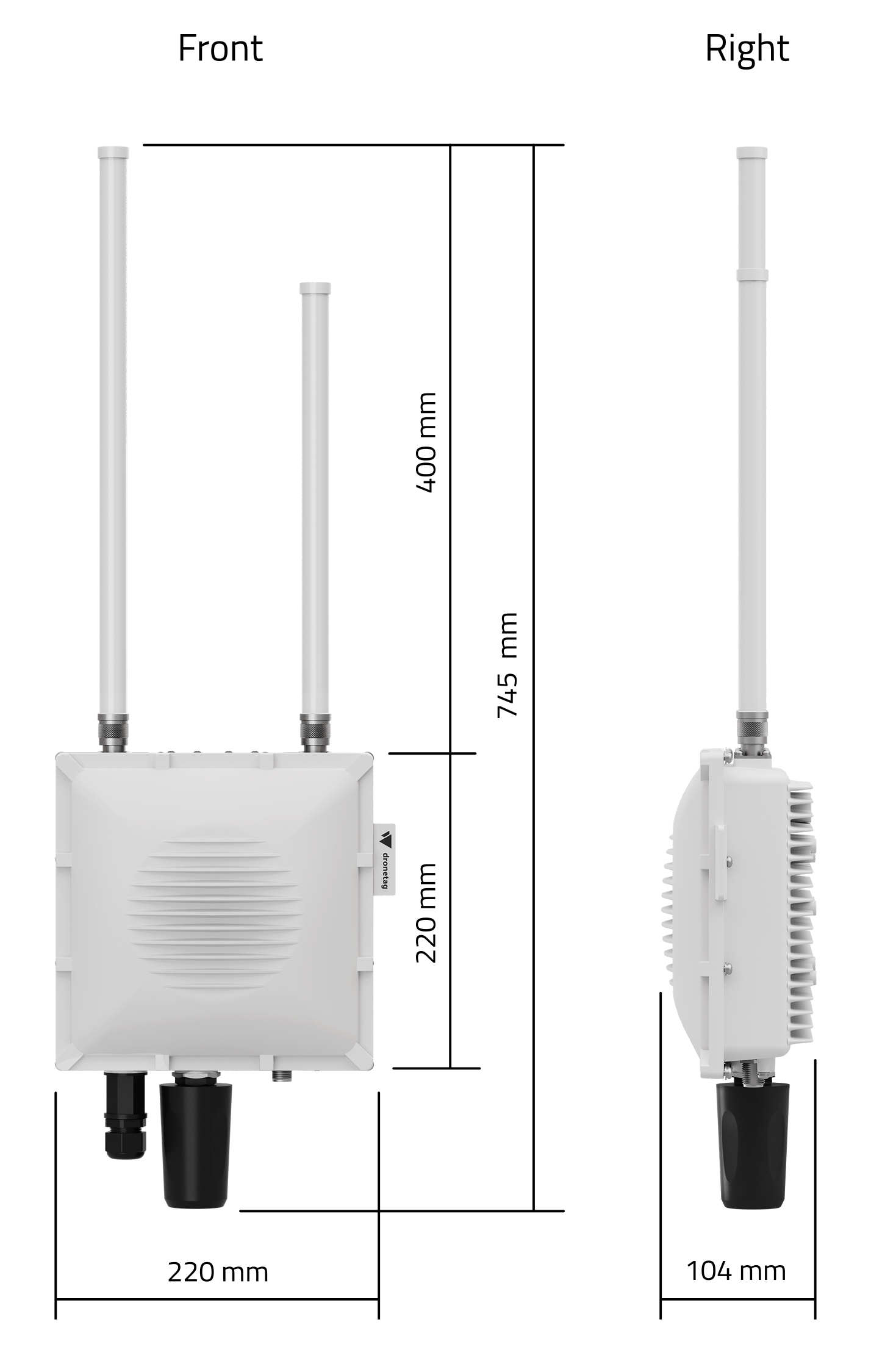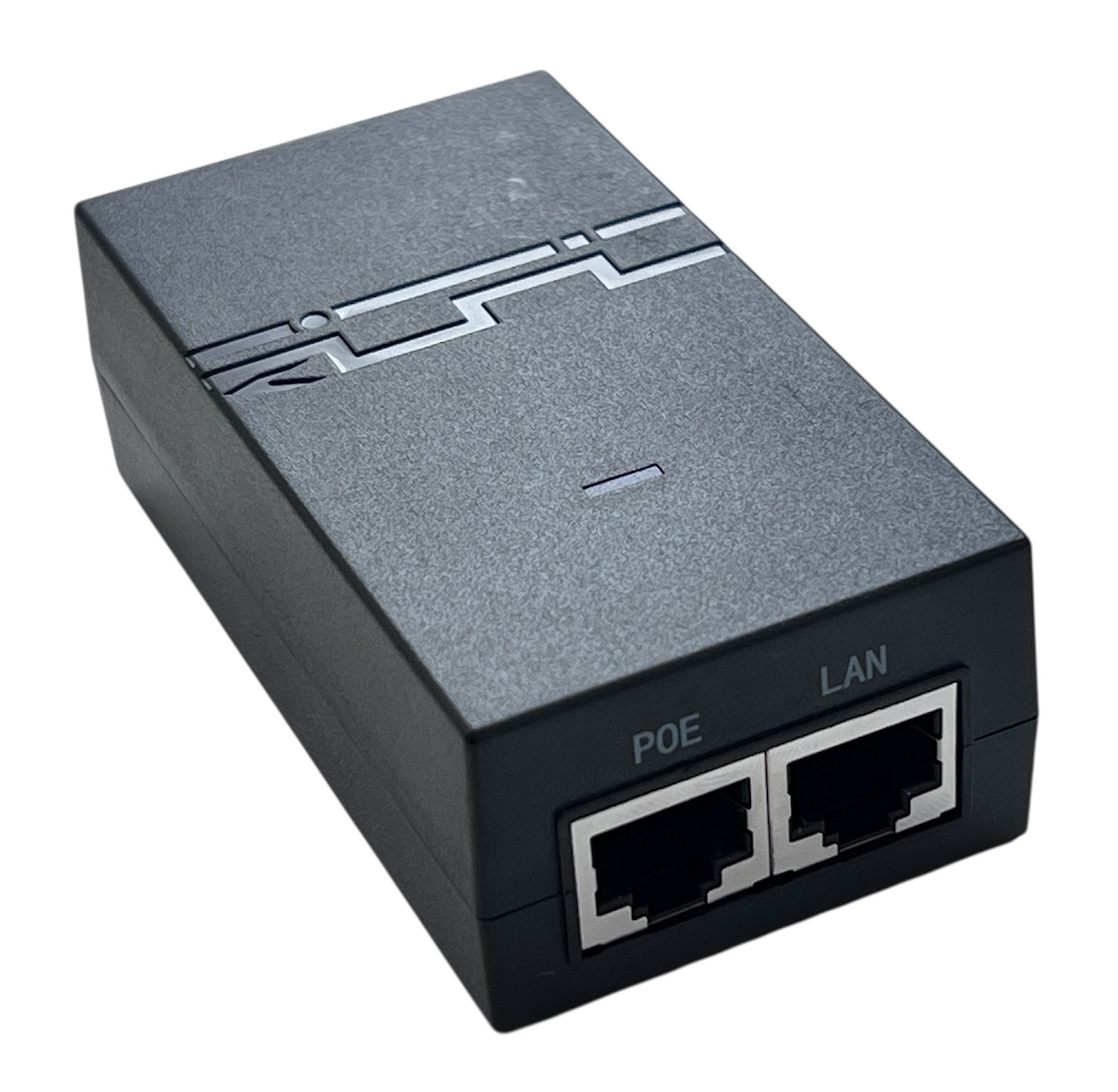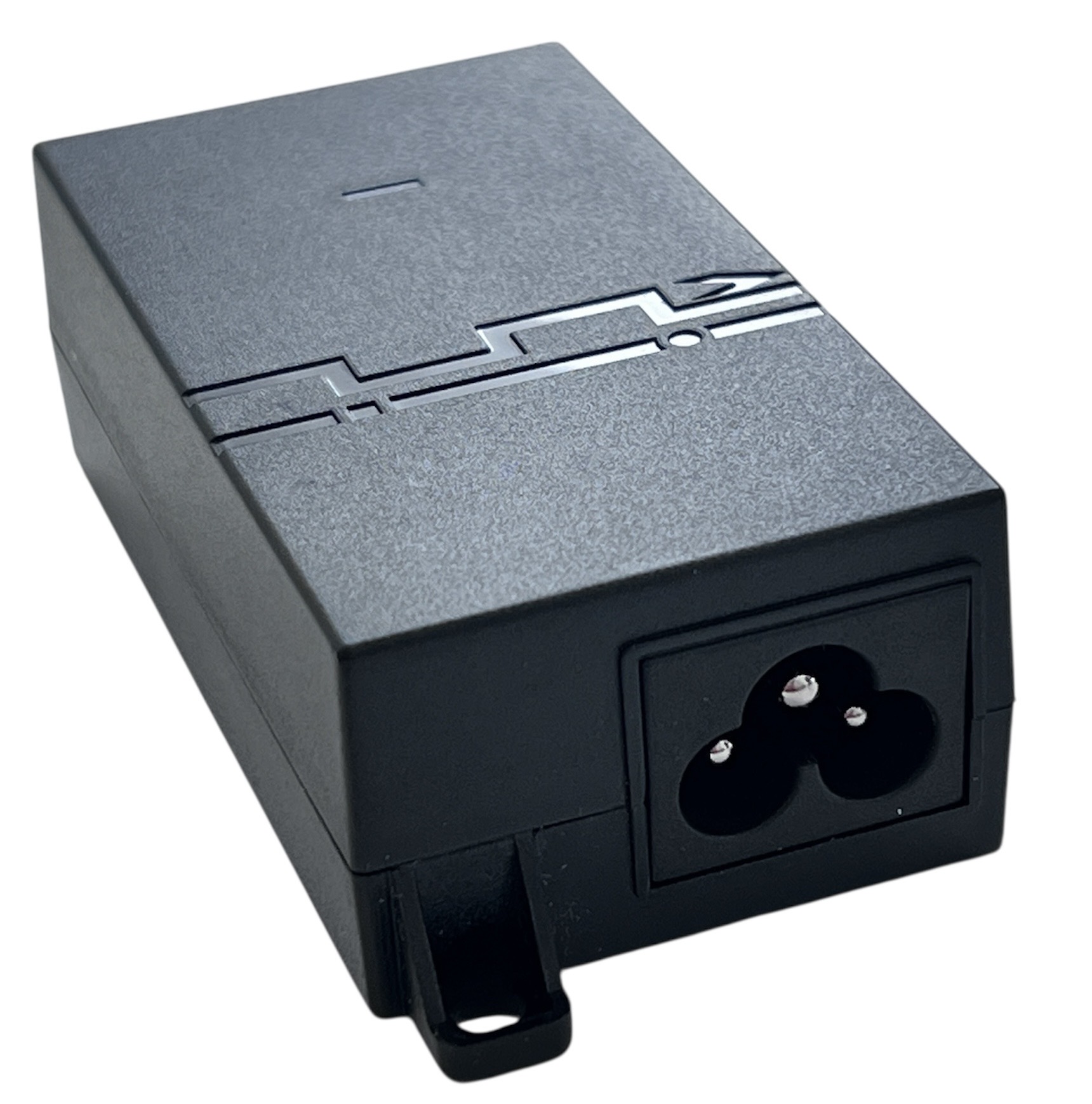Specification
Dronetag Scout is a stationary Remote ID receiver designed to detect and track drones compliant with Remote ID standards in the EU, US, and Japan. It supports both Bluetooth and Wi-Fi-based detection technologies, making it capable of identifying drones regardless of whether they have built-in Remote ID or are using a module. This functionality ensures seamless integration with diverse drone ecosystems.

| Parameter | Value |
|---|---|
| Weight | 2.2 kg without antennas |
| Dimensions | 220×345×104 mm without antennas |
| Power Supply | PoE + 802.3 at, PoE 802.3 af compatible |
| Operating Temperature | -20°C to +50°C (-4°F to 122°F) ambient |
| Detection Range | Up to 10 km with Omnidirectional ant., up to 25 km with Directional ant. |
| Weather Protection | IP67/NEMA-6 |
| Remote ID Technologies | Bluetooth 4, Bluetooth 5 Long Range, Wi-Fi Beacon, Wi-Fi NAN |
| Supported Frequencies | 2.4 GHz Bluetooth, 2.4 GHz + 5 GHz Wi-Fi |
| Antenna connectors | 2x to 5x N-type female connector for Remote ID (number of connectors may differ, depending on Scout configuration) 1x RJ45 waterproof jack |
For further details or inquiries, contact Dronetag Support.
PoE injector
The PoE injector is a device that allows you to combine power and network connectivity to your PoE enabled devices using the same Cat5/5e or Cat6 twisted pair cable.
In the case you want to use your own PoE switch, it must have appropriate standard.


It is ideal to place the PoE injector indoor. It has to be placed in dry place with constant temperature. PoE injector is not waterproof.
PoE Features:
- Input: 100-240 V AC (50~60 Hz)
- Output: 48.0 V DC 0.5 A
- Overcurrent protection
- Supports 10/100 Mbps Ethernet
- 92.5x47x29.8 mm (±1 mm)
Connection for Scout has to be configured to 100Mbit Full Duplex.
Dronetag s.r.o. carries no responsibility for wrong usage or wrong installation.
LTE version of Dronetag Scout, with ordered connectivity, includes micro-SIM card, which is already plugged in the device.
When there is no connectivity ordered, Scout comes with no micro-SIM card plugged in the device and user needs to plug his own micro-SIM card in. Here is a Step-by-Step Guide how to do it.